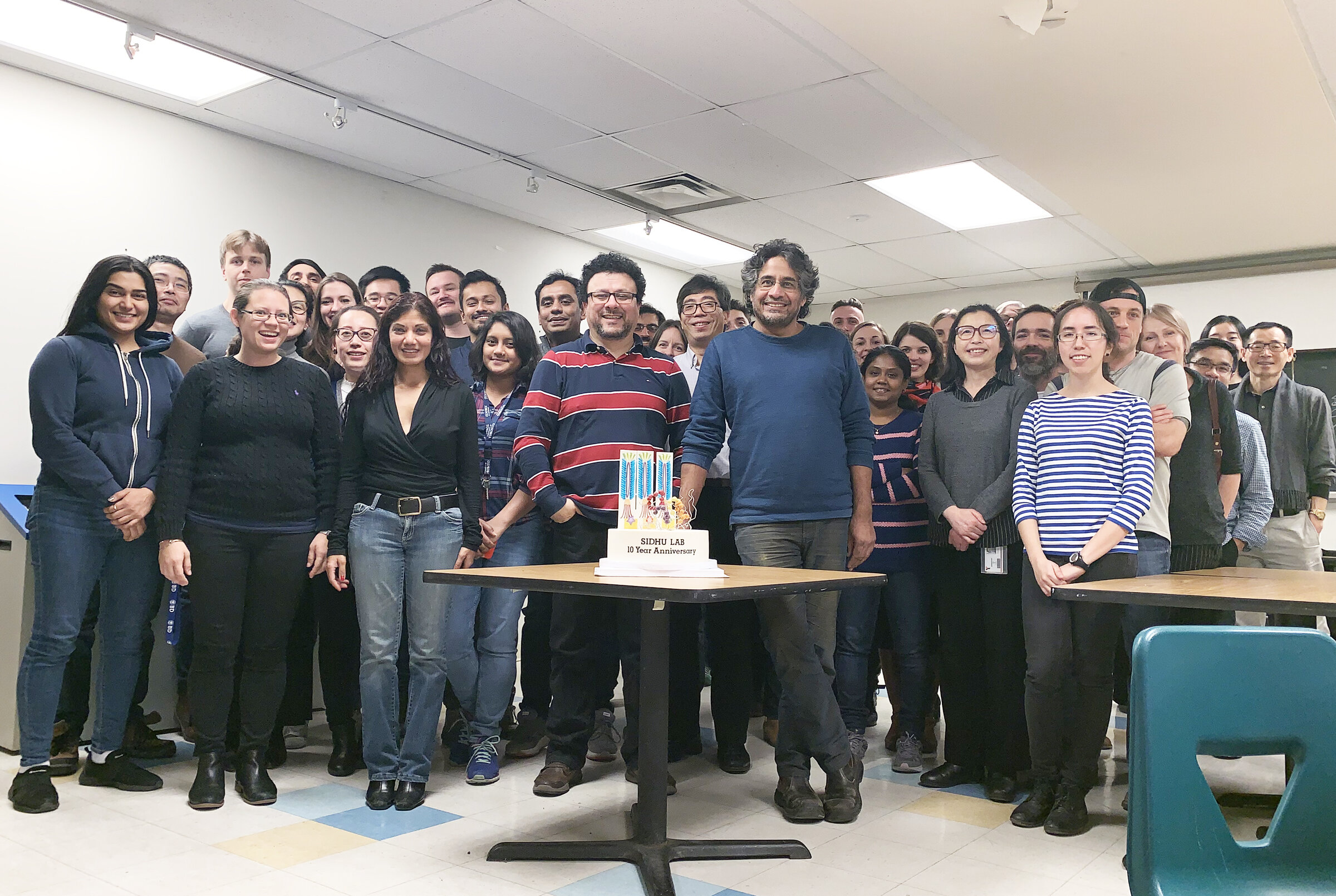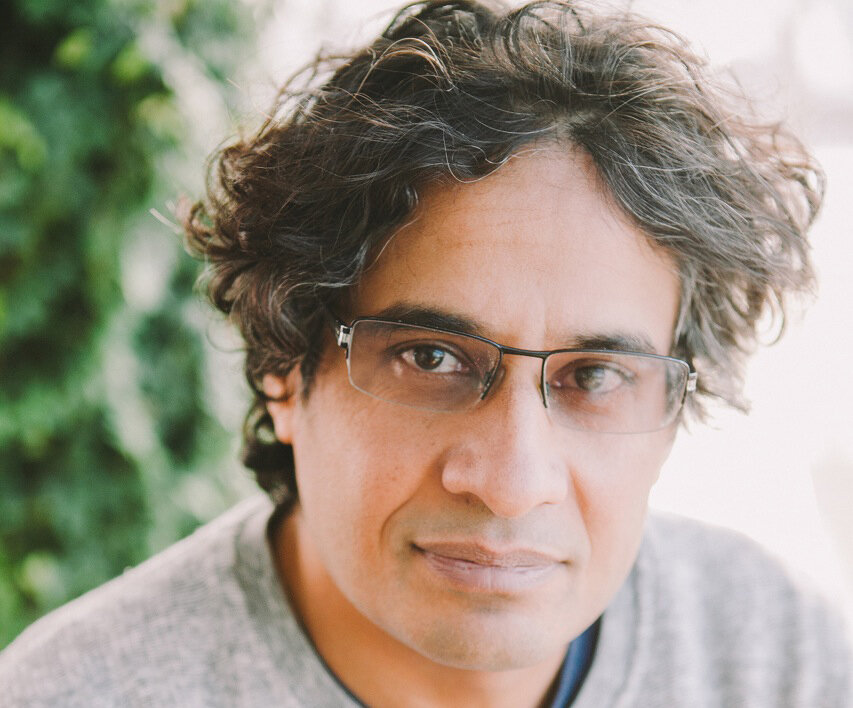GRANT'S DESI ACHIEVER
HOW THIS WAR COULD BE WON
Dr Sachdev Sidhu is a research scientist at the Donnelly Centre for Cellular and Biomolecular Research at the University of Toronto. Seen here at an event celebrating 10 years of his lab.
By SHAGORIKA EASWAR
When he is hailed as the man who has developed a possible cure for coronavirus, Dr Sachdev Sidhu corrects the perception.
“Cure is too strong a word – we’re working towards a treatment,” says the research scientist at the Donnelly Centre for Cellular and Biomolecular Research at the University of Toronto.
So, a treatment for something that has brought the world to its knees, then. Accepted wisdom had it that there is no cure for the common cold. This, most of us extrapolated to the flu. It’s a seasonal thing, we said, with no cure. And yet here he is, with a potential treatment for coronavirus.
“There are treatments for the cold and flu as well,” he clarifies. “Not completely effective, but they exist. We need to make coronavirus more manageable. Treat people who are at high risk, reduce mortality by 90 per cent. A cure is not well defined. When we talk of a cure, it means totally eliminating a disease. Obviously, treatment is more feasible. It reduces a disease. I use the HIV analogy. Have we cured HIV? No. Has it been treated? Yes. Where would we be if we were waiting for a vaccine? Many of us would be dead.”
Dr Sidhu, who has won the Protein Society’s prestigious Christian B. Anfinsen Award for his cutting-edge research in protein engineering, is someone who goes against the flow. While the scientific community at large was focused on a vaccine – by all accounts – he was working on a treatment.
A treatment that didn’t materialize magically in a few weeks, but is built upon years of work. His lab uses protein engineering to design synthetic antibodies and other proteins to target and modulate the natural protein-protein interactions.
Dr Sidhu’s other achievements include pioneering and developing neuro-immuno therapy for cancer. Pionyr Immunotherapeutics, a Bay Area company that he co-founded, recently sold for $1.6 billion.
Northern Biologies, also co-founded by him, is also working on cancer cures.
He’s collaborating with Bristol-Meyers Squibb – which gives his lab over $5 million every year for research – to develop antibodies against cancer.
And in India, he’s working to treat eye disease.
His lab produces half the licences and patents in the university’s faculty of medicine.
There are other groups working on a treatment, says Dr Sidhu, but it’s true that the bigger focus has been on vaccines. “We are one of the very few that are doing it in a transparent manner and under public control.”
Bad as coronavirus is, he says, it is not a chronic virus. It’s quick, it’s over. HIV, people have for life. It becomes part of one’s genome.
“That’s why you can keep HIV under control. With an effective treatment for coronavirus, the person would no longer have COVID within days or weeks. We would still have to give it to lots of people. This is not a Hollywood movie in which the hero has 15 minutes in which to resolve a crisis – Brad Pitt waves a vial and all the zombies disappear. We need millions of dollars to make, distribute and administer the treatment.”
Speaking of which. Investors throw millions at movie stars and sports stars, but scientists have to fight for funding. There’s obviously something wrong with this scenario, but again, Dr Sidhu’s take is a little different.
“There should be more funding, no two ways about that. You should also fight harder for it. But when you do get it, you should be able to apply it to what you’re working on.”
His lab received $1.3 million in federal emergency research funding. And a six million dollar grant from the university which he is not allowed to apply to this project.
Which is hugely frustrating for the scientist. For not only would the treatment his lab is working on be effective against coronavirus, it could be tweaked to cover the changes in the virus itself as it morphs over time and also be applied to other viruses as well.
“Same approach, different antibody,” is how he explains it. “We are already working on treatments for ebola and dengue. This is not research, it’s engineering. We’re applying what we already know. It is precisely designed, and we get better at it as we go. It started with SARS 1, now we have to pick up the pace.
“This battle will last for centuries. The viruses outnumber us, there are trillions of them. We have to be able to live with them. The flu hasn’t gone away. The cold hasn’t gone away. Smart people can see this is a viable approach. There are few more important uses for science – barring global warming. Building great TV is, well, great, but science should be about solving endemic, chronic problems. The challenges we face are political. The government looks at science as a charity, as an expense. And academic institutes believe academics can’t compete with big pharma.”
“No one can stop you. They can just stop themselves from being a part of your success. That’s their loss.”
Dr Sidhu has strong words against this line of thinking.
“Do you think we learned from the COVID-19 crisis when we faced a shortage of PPE? Yes, but what we learned was that we should order more, not that we should manufacture more. Canada excels in exporting lumber and other resources and buying back finished products. Insulin was discovered in Canada, Next year will mark the 100th anniversary of the discovery, but not a single vial was made here after the first decade or two. In the US, they understand the link between health and science and economics.”
Business is not bad, he reiterates, citing the examples of Stanford and MIT which have partnered with businesses to bring major discoveries to the world.
He could partner with big pharma, and there are companies that have shown interest. And this maverick scientist actually worked at big pharma for over a decade before moving to academia.
“Everyone likes to complain about big pharma. Academics like to complain and not do much – this might get me into trouble. But as I say, big pharma is in it to make the maximum profit for themselves and their shareholders. They are not a health agency. I’m not opposed to profit, I’ve founded several companies that have done very well. We could manufacture the drug in Canada – for profit, maybe, but then Canada keeps the money.”
Speaking about his role as a professor in the Department of Molecular Genetics, he says research is the best way to teach.
“When I was in university, I avoided teachers!” he says, with a laugh. “My job was to learn, and to be independent.”
He was drawn to cellular and molecular structure and function and functional genomics and proteomics because they allow him to combine pure research with engineering, and use these to develop novel therapuetics.
“Drug development is 20 per cent brains and 80 per cent guts, there are so many steps,” he says.
He came to Canada at the age of one with his parents when they moved from Punjab, India, in 1970. They settled in British Columbia. His father had chosen Canada for better opportunities for his family, but unable to practise as a lawyer, had to go into manual labour to put food on the table. He had risen from a humble farming family to study law only to be pushed back into farming. And that’s where Gurdev Sidhu found success. He’s now the “biggest, richest blueberry farmer in Western Canada,” says his proud son.
But it wasn’t easy for Sidhu or his siblings even though they were raised in the system, as it were.
“Remember, this was BC of the 1970s. And not even Vancouver or a big city, but a small town. My brother was the first East Indian kid in school. I was the second and our sister the third. We worked alongside our dad at the farm. When I went to university and heard students complaining about the work load, I used to think, this is not work, you don’t know what work is! My dad didn’t get rich based on personality and politics – nor will I!”
Dr Sidhu’s wife, Sabrina Ramos, has her own clothing company, Aloja. Interestingly, though she’s of Brazilian origin, she sources most of her merchandise from India. Their daughter Simone is in grade 3.
His idea of fun is spending time with family, and playing with Simone.
He tells those that seek his advice on finding success in Canada to not just go along with the system, but to work with people who want to achieve big things.
“Racism has not vanished, not really. We’ve just found different terms to describe our experiences. We’ve found places we fit in. But even if you do not fit it, remember that a defensive attitude does not work. No one can stop you – they can just stop themselves from being a part of your success. That’s their loss.”
He finds discovering new things about nature and then applying the knowledge to develop new treatments extremely rewarding.
So how close are we to the treatment for coronavirus?
“We hope to be in clinical trials by the end of the year,” says Dr Sidhu.
“Italy is contributing, France and India are interested.
“I made millions from the sale of my company Pionyr, and am going to invest some of my own money into this.
“It needs to be done. We are moving ahead.”
• Grant’s is proud to present this series about people who are making a difference in the community. Represented by PMA Canada (www.pmacanada.com).


